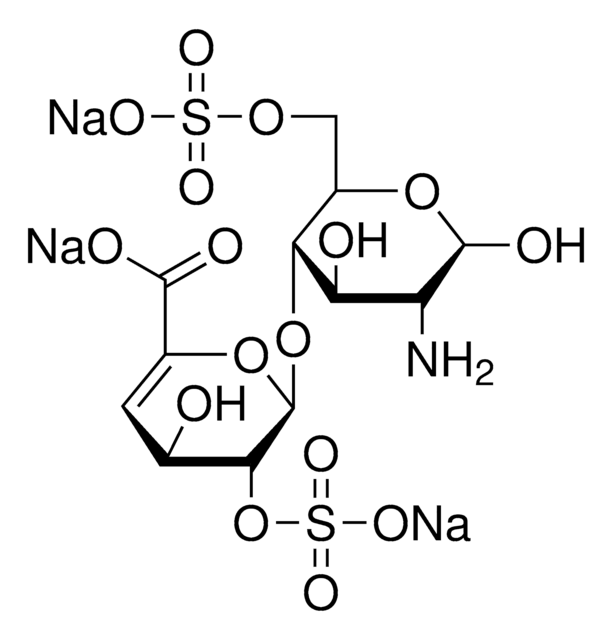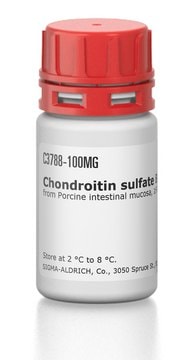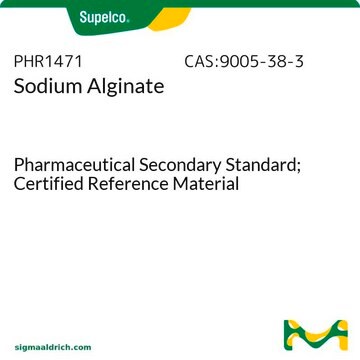H6512
Heparinase II from Flavobacterium heparinum
Lyophilized powder stabilized with approx. 25% bovine serum albumin, lyophilized powder, ≥100 units/mg protein (enzyme + BSA)
Sinonimo/i:
Heparin lyase II
Scegli un formato
315,00 €
Scegli un formato
About This Item
315,00 €
Prodotti consigliati
Origine biologica
bacterial (Flavobacterium heparinum)
Livello qualitativo
Coniugato
conjugate (Glucosaminoglycan)
Stato
lyophilized powder
Attività specifica
≥100 units/mg protein (enzyme + BSA)
PM
84.1 kDa
Temperatura di conservazione
−20°C
Descrizione generale
Applicazioni
- for digestion of heparin sulfate during exosome isolation
- for digestion of heparin sulfate in notochordal cell conditioned media (NCCM) to investigate the content of glycosaminoglycans in NCCM
- as a component of digestion buffer during cell surface glycan processing
- as a component of heparin lyase (HSase) mix to remove the heparin sulfate on the 293ͰT/ACE2 cell surface and study the effect of histones on the infectivity of pseudovirus
Azioni biochim/fisiol
Definizione di unità
Altre note
Codice della classe di stoccaggio
11 - Combustible Solids
Classe di pericolosità dell'acqua (WGK)
WGK 3
Punto d’infiammabilità (°F)
Not applicable
Punto d’infiammabilità (°C)
Not applicable
Dispositivi di protezione individuale
Eyeshields, Gloves, type N95 (US)
Scegli una delle versioni più recenti:
Certificati d'analisi (COA)
Non trovi la versione di tuo interesse?
Se hai bisogno di una versione specifica, puoi cercare il certificato tramite il numero di lotto.
Possiedi già questo prodotto?
I documenti relativi ai prodotti acquistati recentemente sono disponibili nell’Archivio dei documenti.
I clienti hanno visto anche
Articoli
Uncover more about glycosaminoglycans and proteoglycans including the structure of glycosaminoglycans (GAGs), the different types of GAGs, and their functions.
Glycosaminoglycans are large linear polysaccharides constructed of repeating disaccharide units.
Filtri attivi
Il team dei nostri ricercatori vanta grande esperienza in tutte le aree della ricerca quali Life Science, scienza dei materiali, sintesi chimica, cromatografia, discipline analitiche, ecc..
Contatta l'Assistenza Tecnica.













